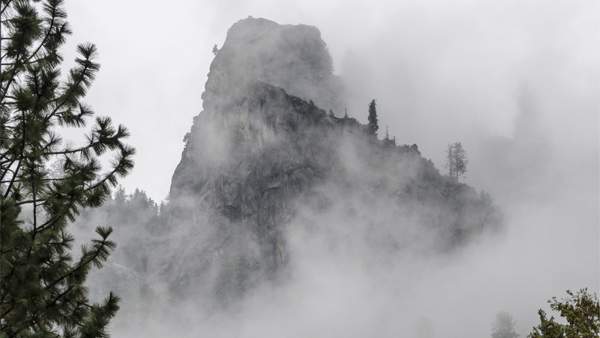Spectacular Scenery
Deep valleys, waterfalls cascading over vertiginous granite cliffs, lush meadows, ancient giant sequoia groves… Yosemite will take your breath away.

Deep valleys, waterfalls cascading over vertiginous granite cliffs, lush meadows, ancient giant sequoia groves… Yosemite will take your breath away.
Escape from the crowds in Yosemite Valley. Nearly 95% of Yosemite National Park is designated wilderness with thousands of lakes and ponds, clear running streams, and unspoiled forests.
Yosemite is home to a wide range of wildlife species, including American black bear, bobcat, cougar, mule deer, chickaree, and Sierra Nevada bighorn sheep.
More than 260 species of birds have been documented in Yosemite. The towering cliffs provide an important habitat for peregrine falcons. Spring brings flocks of migrant warblers, flycatchers, and brightly colored tanagers.
Yosemite has more than 800 miles (1,300 km) of hiking trails. Go for a horseback ride, rafting, or rock climbing. There’s plenty to do for all ages and levels of fitness.
Most people visit Yosemite by car. It’s a 4–5 hour drive from San Francisco. Access from the East over the Sierra Nevada is possible from June to October, but can be closed due to heavy snow.

Emerging from the Wawona Tunnel at the southern approach to Yosemite Valley, visitors are greeted with a stunning view. A vast carpet of pine trees lies at their feet. Rising majestically to the left is the southwest face of El Capitan, straight ahead in the distance is Half Dome, with Bridalveil Fall cascading down from a cliff to the right.
Fast running rivers millions of years ago carved deep canyons from the granite rock. During the glacial period, glaciers transported vast volumes of rubble, scouring and modifying the landscape. This left U-shaped canyons, jagged peaks, and rounded domes of glacially polished granite that inspire awe and wonder.

Half Dome is the iconic symbol of Yosemite. It rises more than 4,737 feet (1,444 m) above the floor of Yosemite Valley, and looks like a perfect dome that has lost one side. Although visible from most places in the park, one of the best views is from Glacier Point on the south side of the valley.
For many years, Half Dome’s smooth granite surface appeared totally inaccessible to climbers, but it was finally conquered in 1875 by drilling and placing iron eyebolts into the rock. Nowadays thousands of hikers reach the top each year with the aid of steel cables that act as handholds. The route has become so popular that it’s now necessary to obtain a climbing permit in advance.
For the less energetic, viewing Half Dome from the valley floor and other vantage points in the park remains an unforgettable sight.

Yosemite Valley is the main tourist attraction in Yosemite National Park. Surrounded by high granite summits, including Half Dome and El Capitan, the floor of the valley features both forest and lush meadows. Many high waterfalls cascade from surrounding cliffs, and are particularly spectacular in spring when water flow is at its peak as snow melts off the Sierra Nevada.
The high volume of visitors detracts somewhat from the spectacular beauty of the surroundings. The wise visitor will quickly move on to less crowded locations, such as Glacier Point, one hour’s drive away. Glacier Point offers close-up views of Half Dome and a bird’s-eye view of the valley floor 3,200 feet (975 m) below.
Also close by is Mariposa Grove where you can wander among ancient giant sequoias, often accompanied only by the local wildlife.

Because of its high elevation (ranging from 4,000 to 9,945 feet / 1,219–3,031 m), you can find yourself literally with your head in the clouds, one day bathed in brilliant sunshine, the next in swirling mist and drizzle. Summers are hot in Yosemite Valley, but cold in Winter.
Yosemite Valley is accessible all year round, but snow falls in winter, and tire chains are often required on park roads. Snow closes the roads to Glacier Point and Tioga Pass generally from November to May.
When the snow starts to melt in spring, creeks and rivers are rushing with water. Small, unnamed waterfalls and cascades appear all along the valley rim. The major waterfalls reach the peak runoff.